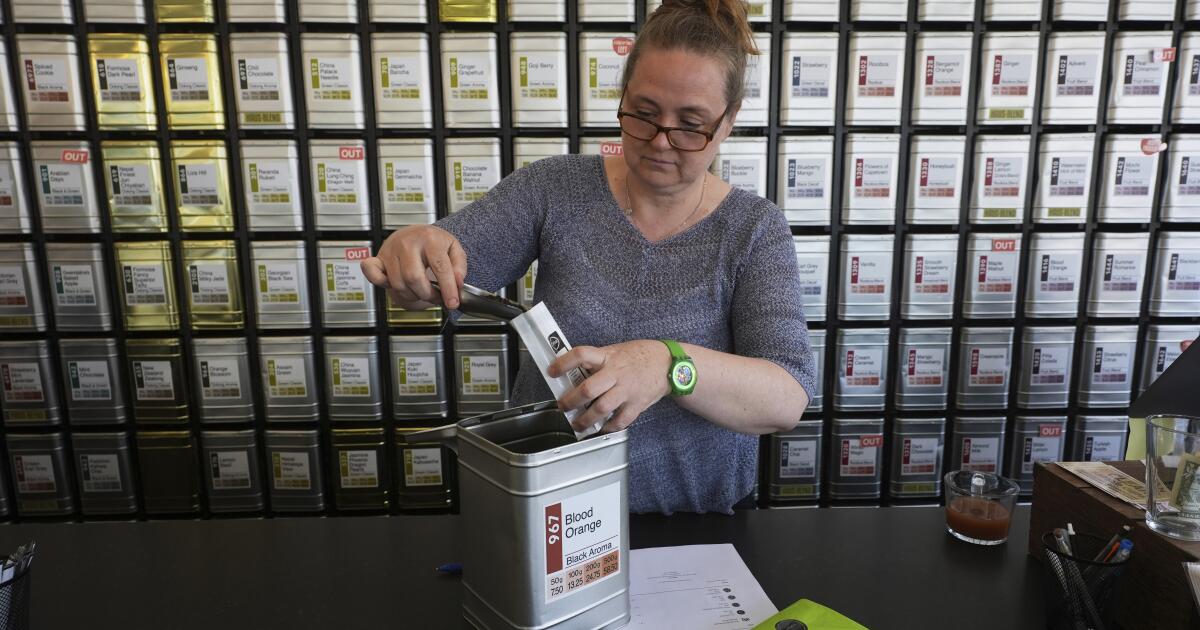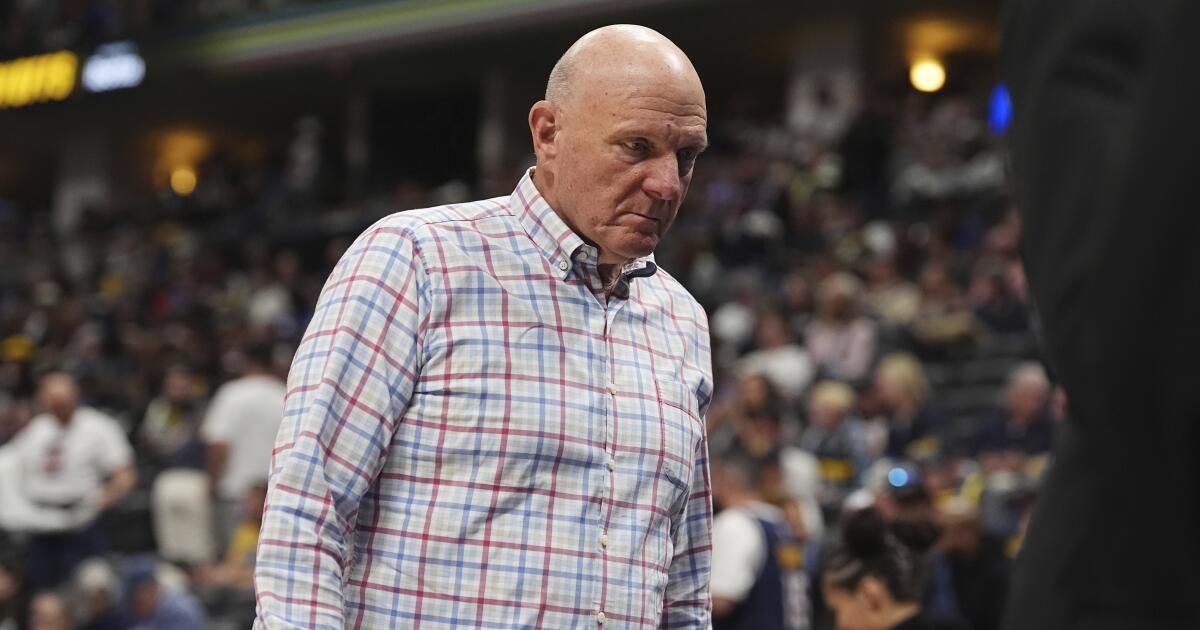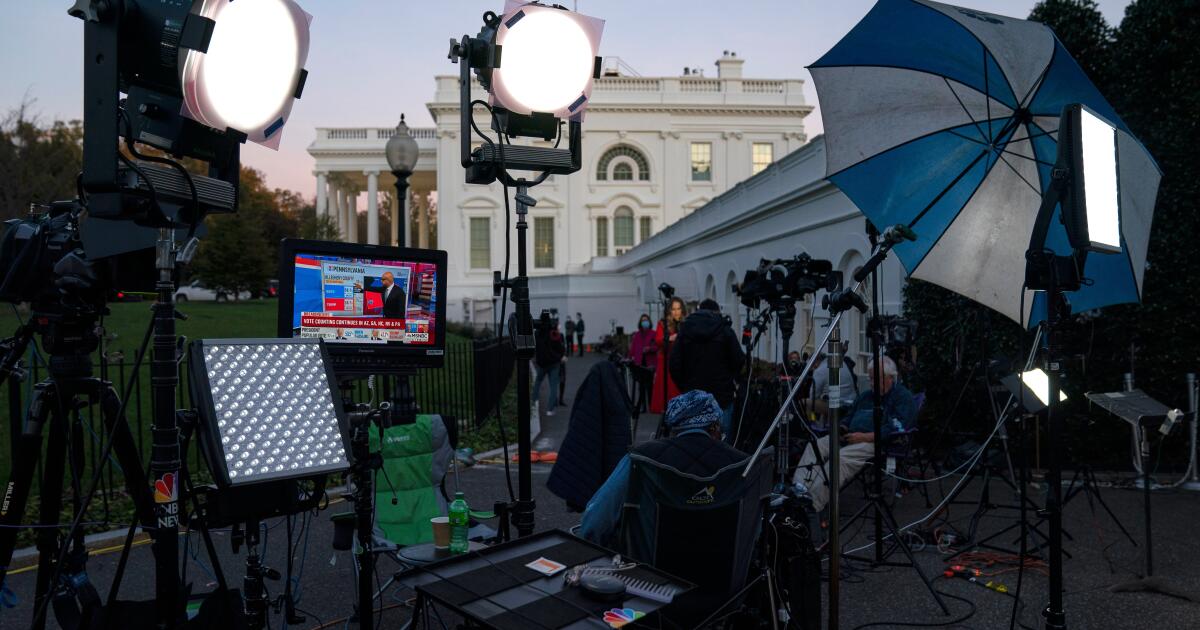Tea tariffs once sparked a revolution. Now they are creating angst
NEW YORK — A tax on tea once sparked rebellion. This time, it’s just causing headaches.
Importers of the prized leaves have watched costs climb, orders stall and margins shrink under the weight of President Trump’s tariffs. Now, even after Trump has given them a reprieve, tea traders say it won’t immediately undo the damage.
“It took a while to work its way through the system, these tariffs, and it will take a while for it to work its way out of the system,” says Bruce Richardson, a celebrated tea master, tea historian and purveyor of teas at his shop, Elmwood Inn Fine Teas, in Danville, Ky. “That tariffed tea is still working its way out of our warehouses.”
While some bigger firms are behind the biggest supermarket brands, the premium tea market is largely the work of smaller businesses — family farms, specialty importers and a web of little tea shops, tea rooms and tea cafes across the U.S. Amid an onslaught of tariffs, they have become showcases for the levies’ effects.
On their shelves, selection has narrowed, with some teas missing because they’re no longer viable products to stock with the steep levies. In their warehouses, managers are consumed with uncertainty and operational headaches, including calculating what a blend really costs, with ingredients from multiple countries on a roller coaster of tariffs. And in backrooms where the wafting scent of fresh tea permeates, owners have been forced to put off job postings, raises, advertising and other investments so they can have cash available to pay duties when their containers arrive at U.S. ports.
“If I were to add up all the money I’ve spent on tariffs that weren’t there a year ago, it could equal a new employee,” says Hartley Johnson, who owns the Mark T. Wendell Tea Co. in Acton, Mass.
Johnson’s prices used to stay static for a year or longer. He ate the tariff costs before being forced to respond. His most popular tea, a smoky Taiwanese one called Hu-Kwa, has steadily risen from $26 to $46 a pound.
He knows some customers are reconsidering.
“Where is that tipping point?” Johnson asks. “I’m kind of finding that tipping point is happening now.”
That tipping point already came for one tea company in the City of Commerce.
International Tea Importers, already under financial strain from climate change and the COVID-19 pandemic, said that tariffs were the final blow, creating an untenable cash flow crunch and forcing its closure after 35 years in business.
“We just became over-leveraged financing — not just the inventory, but also the tariffs,” says the company’s chief executive, Brendan Shah.
Despite the other financial challenges, if not for the tariffs, Shah says, it may have survived.
“Unpredictable tariff policies,” he wrote to customers in announcing the company’s closure, “have created the final, insurmountable barrier.”
Though Trump backed off some tariffs on agricultural products last week, many in the tea trade are wary of celebrating too soon and caution tea drinkers shouldn’t either. Much of next year’s supply has already been imported and tariffed, and the full impact of those duties may not have fully spilled downhill.
Meantime, other tariff-driven price hikes persist. All sorts of other products tea businesses import, such as teapots and infusers, remain subject to levies, and costs for some American-made items, like tins for packaging, have spiked because they rely on foreign materials.
“The canisters, the bamboo boxes, the matcha whisks, everything that we import, everything that we sell has been affected by tariffs,” says Gilbert Tsang, owner of MEM Tea Imports in Wakefield, Mass.
Though globally tea reigns supreme, imbibed more than anything but water, it has long been overshadowed by coffee in the U.S. Still, tea is entwined in American history from the very beginning, even before colonists angry with tariffs dumped tons of it in Boston Harbor.
Boston may run on Dunkin’ today, but it was born on tea.
The 1773 revolt that became known as the Boston Tea Party rose out of the British Parliament’s implementation of tea tariffs on colonists, who rejected taxation without representation in government. After an independent United States was born, one of the new government’s first major acts, the Tariff Act of 1789, ironically set in law import taxes on a range of products including tea. In time, though, trade policy came to include carve-outs for many products Americans rely on but don’t produce.
For more than 150 years, most tea has passed through U.S. ports with little to no duties.
That began to change in Trump’s first term with his hard-line approach to China. But nothing compared to what came with his return to the White House.
In July, the most recent month for which the U.S. International Trade Commission has tallied tariff numbers, tea was taxed at an average rate of over 12%, a huge increase from a year earlier when it was just under one-tenth of a percent. In that single month, American businesses and consumers paid more than $6 million in tea import taxes, amassing in just 31 days more tariffs than any previous full year on record.
“All over again, taxation without representation,” says Richardson, an advisor to the Boston Tea Party Ships & Museum. “Our wants and needs and our voices are not being represented because Congress is avoiding the issue by simply allowing the president to act like George III.”
All told, tea importers paid about $19.6 million in tariffs in the first seven months of 2025, nearly seven times as much as the same period last year.
It’s all been confounding to those steeped in the world of tea, on which the U.S. depends on foreign countries for nearly all of the billions of pounds Americans brew each year. Though a number of small tea farms exist in the U.S., they can’t fill Americans’ cups for more than a few hours of the year.
Said Angela McDonald, president of the United States League of Tea Growers: “We don’t have an industry and we can’t produce one overnight.”
Sedensky writes for the Associated Press.


